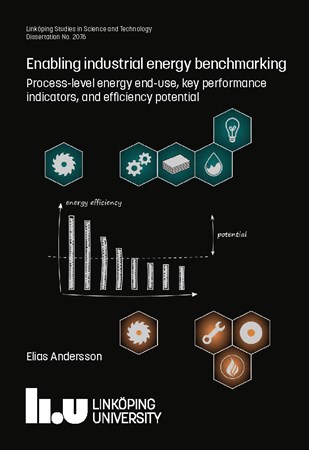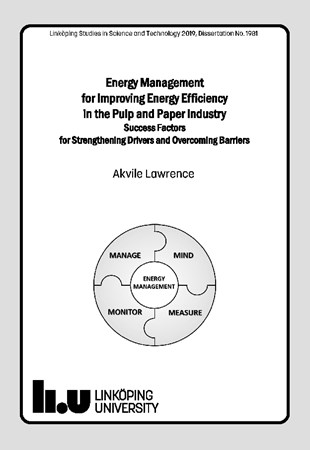Project Description
Increased energy efficiency together with improved material efficiency constitutes key components in the transition to sustainable, climate neutral energy systems, locally, regionally, as well as globally. The total energy efficiency potential in the Swedish industry by 2020 have been estimated to be around 12 %.
Swedish industry should strategically work towards improved energy and resource efficiency in a global market with increasingly scarce resources. This is important for Swedish industry in order to be competitive in the long-term. In this context, decision making and key performance indicators (KPIs) are central to achieve increased efficiency. For auditing authorities, e.g. country and county administrations, relevant and fair KPIs of final energy end-use are very important to be able to perform excellent and fair prevention of and proactive work together with Swedish companies. A fair knowledge base is simply put a prerequisite for energy end-use and energy-related investments to be treated strategically correct in decision-making situations.
Even though there is a large potential for increased energy efficiency, this is not always utilized because of a number of different barriers. Barriers, such as other priorities, lack of time, and lack of information of possible energy efficiency measures are commonly existing. One of the primary ways to realize improved energy efficiency is to work internally with energy management. However, national as well as international research shows that the work with energy management is heavily underdeveloped, except for within major energy-intensive companies.
Despite studies stating an energy efficiency potential in Swedish industry, and despite studies showing the existence of different barriers, major challenges are still existent in Swedish industry. One of the perhaps greatest improvements that are possible in form of research projects or national efforts is to cover the knowledge gap about where energy is in fact used in industry, the so-called energy end-use. International research shows that there is no available knowledge of where energy is used in Swedish industry, i.e. we know how much and what energy carriers are supplied to the industrial energy systems divided into different sectors, but not in what processes the energy is used. Such knowledge may seem rudimentary but leads to the fact that the climate mitigation activities in industry today mainly concerns the supply of energy, i.e. EU ETS, taxes, and the electricity certificate system. Raising knowledge about this enables new opportunities to see where the major actual climate-generated sources of emission emanate. At present, there are compilations from EU ETS for boilers of 20 MWh and greater, but not to what processes these boilers deliver process heat, process steam etc.
A successful Swedish project can contribute strongly to enable this in other countries and regions.
Aim
The overarching aim of this project is to contribute to increased knowledge of energy efficiency (energy conservation) in the Swedish industry.
Objectives
The project objective is to generate a process tree for the largest energy end-using industries in Sweden, by dividing energy end-use on process level for different energy carriers, as well as allocate carbon dioxide emissions to these different processes.
The project's interim goals are:
- Develop an overall taxonomy (division) of the main energy-use processes in the major Swedish industrial sectors.
- Categorize energy end-use and allocate carbon dioxide emissions based on the developed taxonomy of the major Swedish industrial sectors for different energy carrier.
- Study what KPIs (Key Performance Indicators) are used by the industry today in their operational energy management.
- Propose further division of KPIs, based on the developed taxonomy, for the major Swedish industrial sectors.







